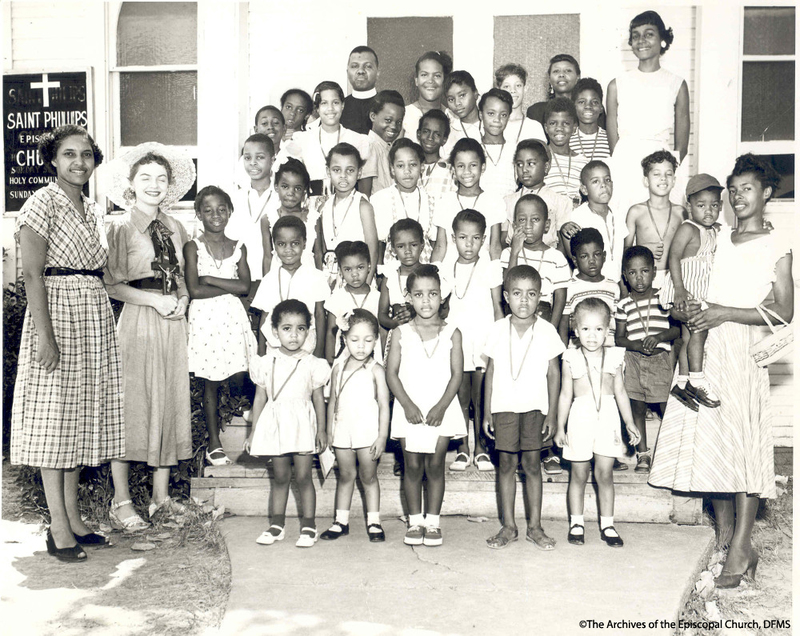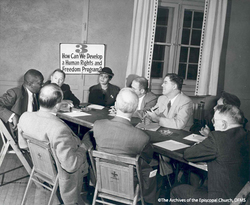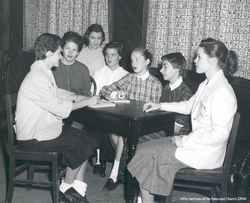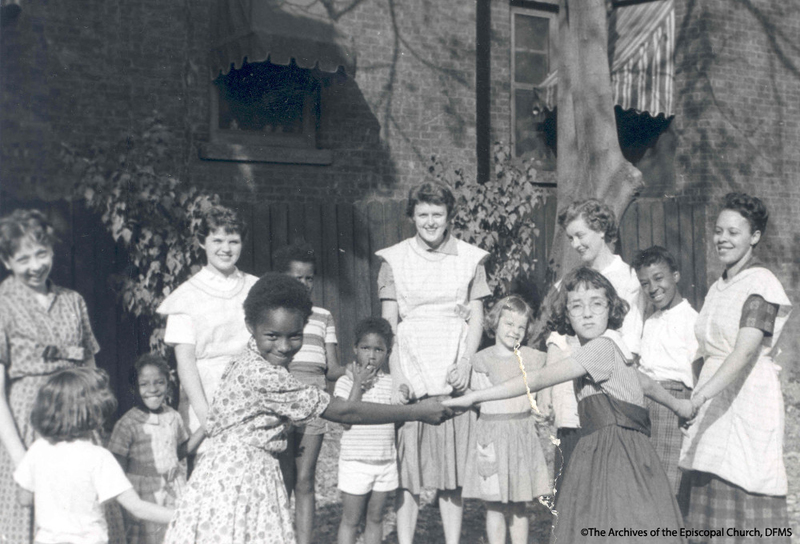Segregation and Integration
Segregation
In the aftermath of World War II, leaders in the Episcopal Church, as in American society, began to recognize more clearly the deep division and resentment of enforced segregation and unexamined racial bigotry. An opinion survey commissioned by the Department of Christian Social Relations of the Episcopal Church in 1952 showed that only 27% of the church’s laity and 13% of its priests believed in segregation within the Church.
Integration
A group from the integrated church of St. Stephen’s celebrating Palm Sunday in St. Louis, Missouri, 1957.
The earliest court victories by Black Americans gave impetus to representatives and leaders of the Episcopal Church at the national level to adopt an official pro-integration position. The General Convention of 1955 recommended that Episcopalians accept and support the ruling of the Supreme Court in Brown vs. Board of Education, and in 1958, Convention approved a public policy resolution supporting equal opportunity in education, housing, employment, and public accommodations. By 1961, the Convention had passed what seemed at the time to be a landmark statement asserting flatly that, “prejudice is inconsistent with the Gospel of Jesus Christ.”
Despite a lethargic hierarchy, the grass roots Church began experimenting with integration, especially in social service organizations, Christian education, and youth ministries. The City Missions were prominent in pushing for racial justice, but there were also urban parish efforts that went largely uncelebrated and undocumented. [Sources]







